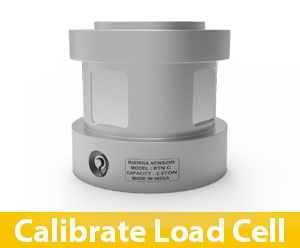Load cells are the backbone of modern weighing and force measurement systems, ensuring accuracy, safety, and efficiency across industries such as manufacturing, construction, logistics, and healthcare. However, even the most advanced load cell will deliver unreliable results if it is not properly calibrated.
Calibration is the process of comparing the load cell’s measurement output with a known reference standard and adjusting it to minimize errors. In this blog, we’ll explore why calibration is important, the step-by-step calibration process, best practices, and common errors to avoid.
Why Load Cell Calibration is Essential
- Accuracy: Ensures precise readings for production, testing, and safety.
- Compliance: Meets industry standards (ISO, OIML, ASTM, etc.).
- Safety: Prevents accidents caused by incorrect load measurements.
- Efficiency: Improves process control, reduces downtime, and minimizes waste.
- Reliability: Maintains trust in measurement data for long-term operations.
Types of Load Cell Calibration
Static Calibration
- Applying known weights incrementally to the load cell.
- Suitable for general weighing applications.
Dynamic Calibration
- Involves measuring force under changing conditions (impact, vibration).
- Common in aerospace, automotive, and material testing.
Factory Calibration vs. Field Calibration
- Factory calibration is done by the manufacturer with high-precision reference standards.
- Field calibration is performed at the installation site to account for environmental factors.
Step-by-Step Guide to Calibrating a Load Cell
Step 1: Preparation
- Verify the capacity, range, and specifications of the load cell.
- Ensure the load cell is installed properly (mounting, wiring, and alignment).
- Eliminate sources of vibration, temperature fluctuation, or electrical noise.
Step 2: Zero Adjustment
- Apply no load to the load cell.
- Adjust the zero point so the output reads zero or baseline value.
Step 3: Apply Known Reference Load
- Place a calibration weight or force standard gradually.
- Record the output signal at different load points (e.g., 25%, 50%, 75%, 100%).
Step 4: Linearity Check
- Verify the output signal increases proportionally with the applied load.
- Correct deviations using the calibration software or amplifier adjustments.
Step 5: Span Adjustment
- Adjust the system so the maximum applied load matches the rated capacity output.
Step 6: Repeat and Verify
- Remove the load, reapply, and check for consistency.
- Perform multiple calibration cycles to ensure stability.
Best Practices for Load Cell Calibration
- Use Certified Reference Standards: Always use weights or force devices calibrated to traceable standards.
- Calibrate Regularly: Perform calibration at intervals (monthly, quarterly, or annually) depending on usage and criticality.
- Consider Environmental Conditions: Temperature, humidity, and vibrations affect readings; calibrate in real operating conditions.
- Warm-Up Time: Allow the load cell system to stabilize before calibration.
- Follow Manufacturer Guidelines: Each load cell design may have specific calibration procedures.
- Document Everything: Maintain calibration records for audits, compliance, and troubleshooting.
Common Errors to Avoid During Calibration
Incorrect Mounting
- Misalignment or loose fittings can cause non-linear outputs.
Ignoring Environmental Factors
- Calibrating in a controlled lab but using in harsh conditions leads to inaccurate results.
Using Non-Standard Weights
- Household weights or makeshift loads reduce calibration accuracy.
Overloading During Calibration
- Applying load beyond rated capacity damages the load cell permanently.
Electrical Noise Interference
- Nearby machinery or poor grounding can affect signal stability.
Skipping Zero Check
- Failure to reset baseline introduces long-term drift in readings.
When Should You Recalibrate a Load Cell?
- After installation or relocation.
- After mechanical shock, overload, or impact.
- If readings appear unstable or inconsistent.
- After repairs or maintenance.
- At scheduled intervals for preventive maintenance.
Conclusion
Proper calibration of load cells is not just a technical formality; it’s an essential practice for ensuring accuracy, safety, and efficiency in industrial operations. By following structured calibration steps, adhering to best practices, and avoiding common mistakes, businesses can maintain precise load measurements and extend the life of their equipment.
Investing in regular calibration routines ensures compliance with standards, reduces costly errors, and guarantees the reliability of your weighing systems in the long run.








